NorthEast Radio Watch 11/4/2024: Cumulus Consolidates in RI
In this week’s issue… "Hot" cools down in Providence, CT studios closed - GBH to sell Cape studios - A HEBA in Hamden? - New HDs in New York - Another Canadian AM to close
By SCOTT FYBUSH


The fourth installment of our Year in Review (catch up on yesterday’s installment here) spotlights what were, in our opinion, the biggest stories of the year across the region we cover. Think we left something out? Weigh in below in the comments…


Comcast told Ansin it wasn’t renewing as early as August 2015. January 2016 brought the fight into the open, though, with a public announcement from NBC that it was going its own way. By March, Ansin was in federal court with a lawsuit alleging that Comcast’s attempt to buy WHDH at a bargain price and its subsequent decision to drop the affiliation violated both antitrust law and the conditions that had been placed on the NBC/Comcast deal a year earlier.
Ansin’s legal battle failed, and by August it was clear that any hope of a last-minute reconciliation was dead. As WHDH prepared for an independent future, very heavy on local newscasts at all hours of the day, attention turned to NBC’s plans for the new “NBC Boston,” its launch of a new local newsroom based at Comcast’s existing New England Cable News operation in Newton, and in particular where and how over-the-air viewers would have access to the network’s signal.
Through its Telemundo division, NBC/Comcast already owned a Boston-market signal, but New Hampshire-based WNEU (Channel 60) reached only the northernmost parts of the market. Over the summer and into autumn, Comcast began to flesh out plans to get NBC to more of the market – first by paying ZGS $100,000 for low-power WTMU-LD, which re-emerged in September as WBTS-LD, operating on RF channel 46 from the Newton/Needham tower farm but using virtual channel 8, and then at year’s end (under Congressional pressure) leasing a subchannel from WMFP (Channel 62) for more full-market coverage.
All of which sets up one of the biggest questions ahead in 2017: will Comcast’s gamble pay off? Will viewers find NBC on its new channel numbers all over the dial – 8.1, 60.2 and 60.5 over the air, channels 10 or 810 on Comcast, and channels 10, 16 and elsewhere on other providers? In a highly competitive local news market, will Comcast’s hires of familiar faces such as anchor Phil Lipof (ex-WCVB) and chief meteorologist Pete Bouchard (ex-WHDH) lure an audience from the four other established news operations in town?
And if Comcast shows that you don’t need an established local affiliate to be successful in a top-10 market…what will that mean to the network/affiliate dynamic in the years to come?
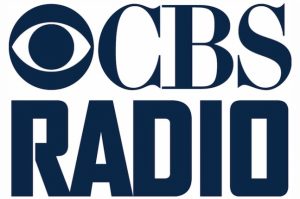

Even though CBS Radio continues to be one of the most profitable players in the radio universe, local radio is a slow-growth business compared to the flashier pieces of the CBS portfolio. As the separate company it will become in 2017, the CBS Radio stations will be under more intense budget pressure, and the end of 2016 brought some signs that Fernandez was already in cost-cutting mode.
As some veteran talents departed of their own volition (such as WBZ Boston’s afternoon anchor Diane Stern, ending a 36-year run), the year closed with involuntary exits from others – WOGL Philadelphia morning co-host Valerie Knight, KDKA Pittsburgh afternoon co-host Shelley Duffy, and more dramatic cuts outside the region, including big cutbacks at KNX in Los Angeles.
What will CBS Radio look like as an independent company? Will smaller clusters like Pittsburgh and Hartford finally find the buyers that CBS has reportedly been seeking for years? We’ll be watching closely in the new year.


Except for Charlotte (where Beasley’s existing holdings forced a spinoff) and Detroit, the Greater markets were firmly within NERW-land, which made this a big story for our readers. In Boston, Greater’s five big FMs (WBOS, WBQT, WKLB-FM, WROR-FM, WMJX) added to Beasley’s lone leased-time AM, WRCA. In Philadelphia, the deal reversed Beasley’s recent exit from the FM dial – after selling WXTU and then-WRDW-FM to CBS, Beasley added Greater’s WMMR, WBEN-FM, WPEN-FM and WMGK to its leased-time AMs, WTEL and WWDB.
In New Jersey, Beasley picked up Greater’s smallest stations, too – WMGQ/WCTC in New Brunswick, WMTR/WDHA in Morristown, WRAT/WJRZ in Monmouth/Ocean.
As with CBS Radio, Greater had been a rarity in the 21st century broadcast landscape, a debt-free operator able to put more resources than usual into its stations. Under Beasley, that began to change quickly at year’s end. In Boston, veteran talent such as WROR’s Wally Brine and WKLB’s John Willis saw the writing on the wall and exited; in Philadelphia, rumors flew that WPEN-FM might follow Greater sister WMGC Detroit out of the expensive sports format into a cheaper music format.
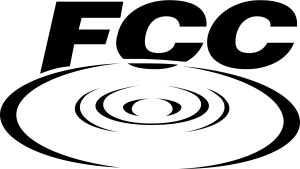

With a strict “one-shot-per-station” restriction and a speedy start to the process with a January 29 opening for the first such window, things got busy very quickly for AM stations seeking out available translators, translator owners looking to cash out on their portfolios, and the brokers and consultants who helped to put them together. (Disclaimer: Fybush Media is one of those brokers and consultants, and we had the pleasure of helping many broadcasters across the region buy, sell and move translators in 2016.)
For many AM owners, the windows provided exciting new opportunities to reach an audience that, in some cases, has completely abandoned the AM dial. The smaller AMs that enjoyed the first window (for class C and D signals) were often able to get translators that fully replicated their AM signal coverage. In some markets, that allowed AM stations to effectively become small commercial FM signals, bringing new formats to the air like “Hot 107.1” (WHLD 1450) in Olean, New York, “105.7 the Beat” (WSNO 1450) in Barre, Vermont and “EZ 105.5” (WEZR 1240) in Lewiston, Maine. (And yes, it also drew some criticism from those who noted, correctly, that the process was less “AM Revitalization” than “AM Augmentation,” doing little to actually boost AM-band listenership.)
The window was also profitable for owners who had stocked up on translators over the years. In addition to the usual players such as national Edgewater Broadcasting and regional groups such as Family Life Ministries and Northeast Gospel Network, public broadcasters such as UMass, Vermont Public Radio and North Country Radio were able to sell excess translators into the window at surprisingly high prices.
The translator story will continue into 2017, with the FCC expected to open two more windows to allow AM stations that still didn’t get translators to apply for brand-new translator permits. We’re looking forward to covering the process – and to assisting more broadcasters to find new audiences, too, through our consulting and brokerage services.
Error, group does not exist! Check your syntax! (ID: 26)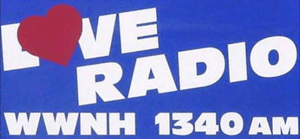

Under the agreement, Dodge surrendered a number of his licenses and CPs, including WCKL (560 Catskill NY) and LPFMs in Westhampton MA (WDOE-LP 97.5) and Williamsburg MA (97.9). He’ll be granted a license for WWNH (1340 Madbury NH), which operated from 1989 until 2010 under program test authority but was never actually licensed. And he was granted license renewals for three translators in New Hampshire and Vermont whose sales had been pending for most of the year.
Those renewals meant the sales of the translators (two to Costa-Eagle, for $150,000 total and one to Rhode Island‘s WNRI 1380, for $75,000) were allowed to proceed – but $100,000 of that $225,000 went straight to the FCC as a “voluntary contribution” from Dodge that’s part of the consent decree.
Despite the interesting timing – the consent decree came just a day before the last translator window closed – Dodge was able to squeeze in several more translator sales at the finish line, leading to questions about why someone who openly admitted using fake names and misleading the FCC was still allowed to profit from the window.
Will Dodge behave himself going forward? The FCC has new weapons to use against him if he doesn’t, and we’ll be watching closely, as always, to see what comes next.
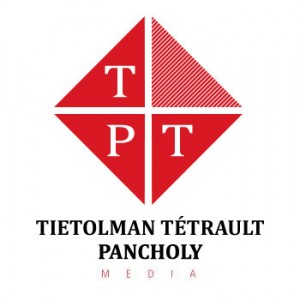

But there were still plenty of questions – with no staff, no studio and no actual programming, does the new CFNV meet the CRTC’s qualifications to be fully licensed? What of TTP’s planned sister English-language signal at 600 on the dial, which has one last extension pending from the CRTC? And is there room in the crowded Montreal radio landscape for these stand-alone AM signals against behemoths such as Bell and Cogeco?


As Southern Belle/Seven Mountains kept growing through 2016, it established itself as a true competitor to Forever’s stations, especially in the State College market where the two companies together control most of the area’s commercial stations. In surrounding markets, Cantrell and her mother kept buying, creating new “Bigfoot Country” outlets covering much of central Pennsylvania and acquiring new signals in small markets such as Wellsboro/Mansfield, Clearfield and DuBois.
It was an interesting year for group ownership across New England, with some new players and some expansion among existing operators.
The new player in the Connecticut River Valley was Sugar River Broadcasting, a new venture from radio vets Rob Landry (long with WCRB in Boston) and his brother John Landry (whose day job is with Westwood One in New York). For $1.95 million, they bought out Bob Vinikoor’s Koor Broadcasting stations, news-talk WNTK-FM (99.7 Newport NH), news-talk WUVR (1490 Lebanon NH)/W255CF (98.9 West Lebanon NH), oldies WCFR (1480 Springfield VT)/W293BH (106.5 Springfield VT), classic country WCVR (1320 Randolph VT) and country WCNL (1010 Newport VT)/W234BN (94.7 Claremont NH).


To the south, John Fuller’s Red Wolf bet big on translators, expanding its “Kool” oldies format to the FM dial everywhere from southern Rhode Island (WSKP 1180) to Hartford (WNTY 990) to Springfield (WSPR 1270), while also augmenting its “La Bomba” Spanish-language FM reach.
Just across Long Island Sound, college students Matt Glaser and Andrew Adams’ Bold Broadcasting made headlines by buying Cumulus leftover WELJ (104.7 Montauk NY), with plans to relaunch in the new year as a local signal for the tip of the East End.
And in western Massachusetts, Gamma exited the Berkshires by selling its holdings – nearly the entire lineup of signals along Route 7 – to central New York’s Galaxy group, a brand-new entrant into New England.
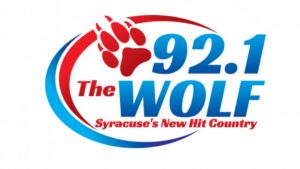

For Galaxy, the end of WSEN-FM presented an opportunity: it hired former WSEN staffers such as Gary Dunes and John Carucci and added them to a very full airstaff on its own WZUN (102.1), which rebranded as “SEN at 102.1.”
And then Craig Fox entered the picture, surprising everyone with a second Family Life deal in which he swapped the big regional signal of his country WOLF-FM (105.1 De Ruyter, along with WWLF 96.7 Oswego and a translator) to Family Life in exchange for the smaller, but more centrally-located, 92.1 signal.
A win-win? For Fox, it made WOLF-FM, now on 92.1, a more potent competitor to iHeart’s dominant WBBS (B104.7), while Family Life enjoyed even wider reach across Central New York on the big 105.1 signal – and in the process, Fox kept the WSEN-FM calls in hand on his “Dinosaur” oldies signal at 103.9, blunting Galaxy’s ability to use the “SEN” branding on 102.1, which settled back into its previous “Sunny 102” identity.
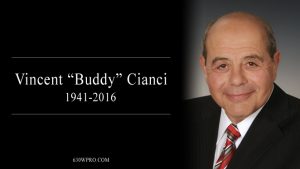

First on WHJJ (920) and then as part of the WPRO (630)/WEAN (99.7) talk lineup, “Buddy” was the rare politician who also made for a dynamic presence on the air. In a state where politics is usually the topic of daily conversation, Cianci often drove the discussion. Along the way, he helped keep WPRO’s ratings and revenues unusually high for a 21st-century AM talker, especially in the context of Cumulus’ struggle to maintain that sort of relevance at bigger-market talkers such as New York’s WABC and Los Angeles’ KABC.
With the loss of Cianci, who died Jan. 28 at 74, that struggle got a little harder in Providence – and it wasn’t helped by the mysterious end-of-year departure of another WPRO star talker, the always-contentious John DePetro.
(We’ll wrap up our Year in Review coverage tomorrow with a comprehensive look at the year in radio and TV obituaries.)
Error, group does not exist! Check your syntax! (ID: 26)> > > Coming Friday, Dec. 30: Those We Lost
 We don’t have a cover yet (stay tuned for the reveal!), but we’re hard at work on an achievement we never thought we’d reach – the landmark 24th edition of the world-famous Tower Site Calendar.
We don’t have a cover yet (stay tuned for the reveal!), but we’re hard at work on an achievement we never thought we’d reach – the landmark 24th edition of the world-famous Tower Site Calendar.
It’s not just a useful wall calendar. It’s also a tribute to more than a century of radio history.
And the proceeds from the calendar help sustain the reporting that we do on the broadcast industry here at Fybush Media, so your purchases matter a lot to us here.
Visit the Fybush Media Store and place your order now for the next calendar, get a great discount on previous calendars, and check out our selection of books and videos, too!
In this week’s issue… "Hot" cools down in Providence, CT studios closed - GBH to sell Cape studios - A HEBA in Hamden? - New HDs in New York - Another Canadian AM to close
In this week’s issue… GBH shuffles mornings, prepares new show launches - NYSBA inducts Hall of Famers - More news-talk in the Hudson Valley - Remembering Dan Sys
In this week’s issue… Beasley cuts claim veteran jock - FCC releases LPFM decisions - AM towers coming down - New voices at Indie 88
In this week’s issue… Remembering J.J. Jeffrey, Canada's Bullard - Cumulus surrenders WFAS license - 7 Mountains shuffles Hornell, Mansfield signals - TV director's death cancels newscast